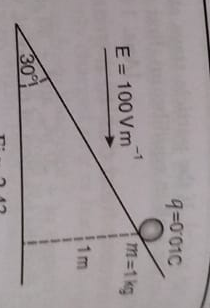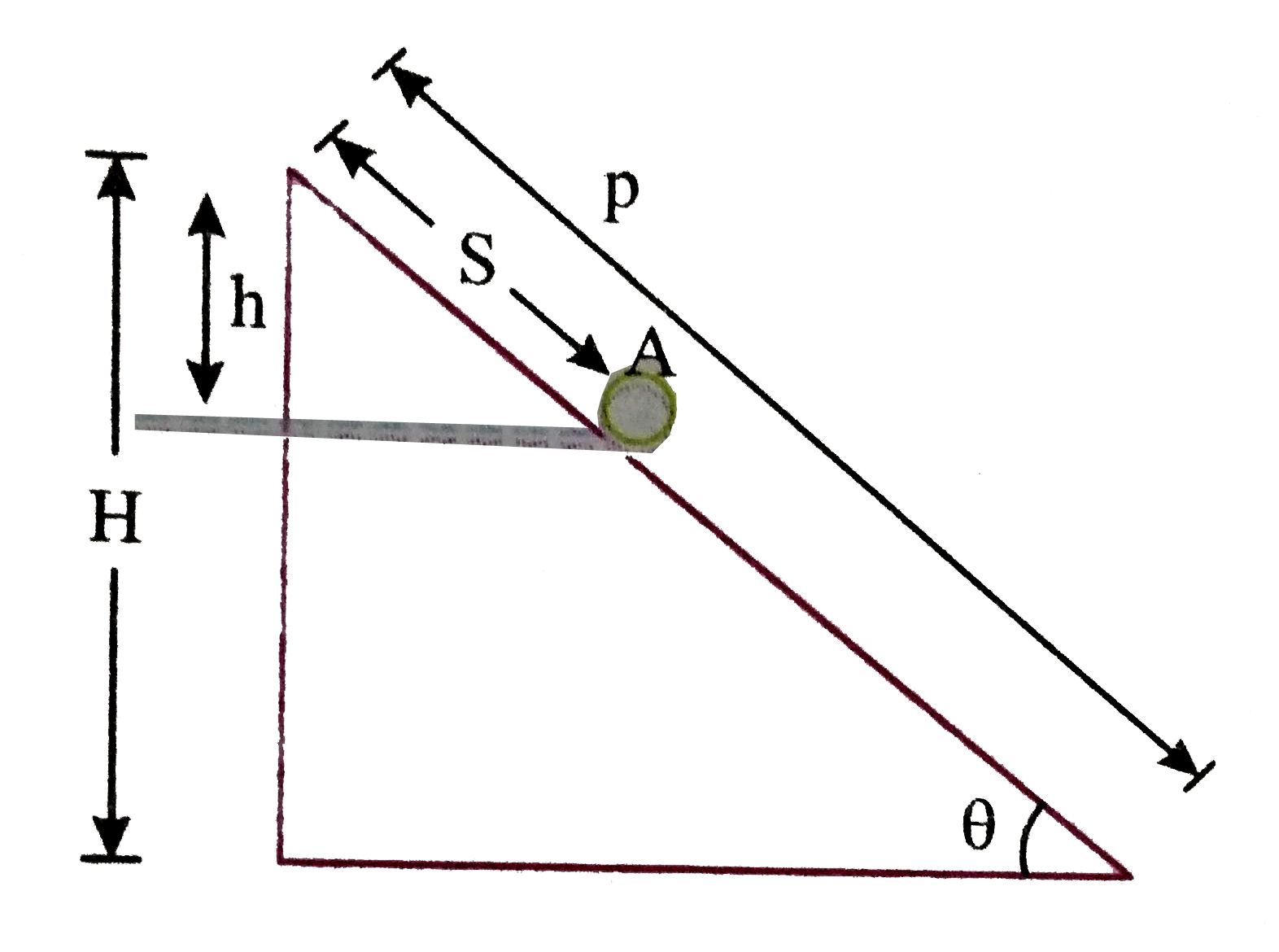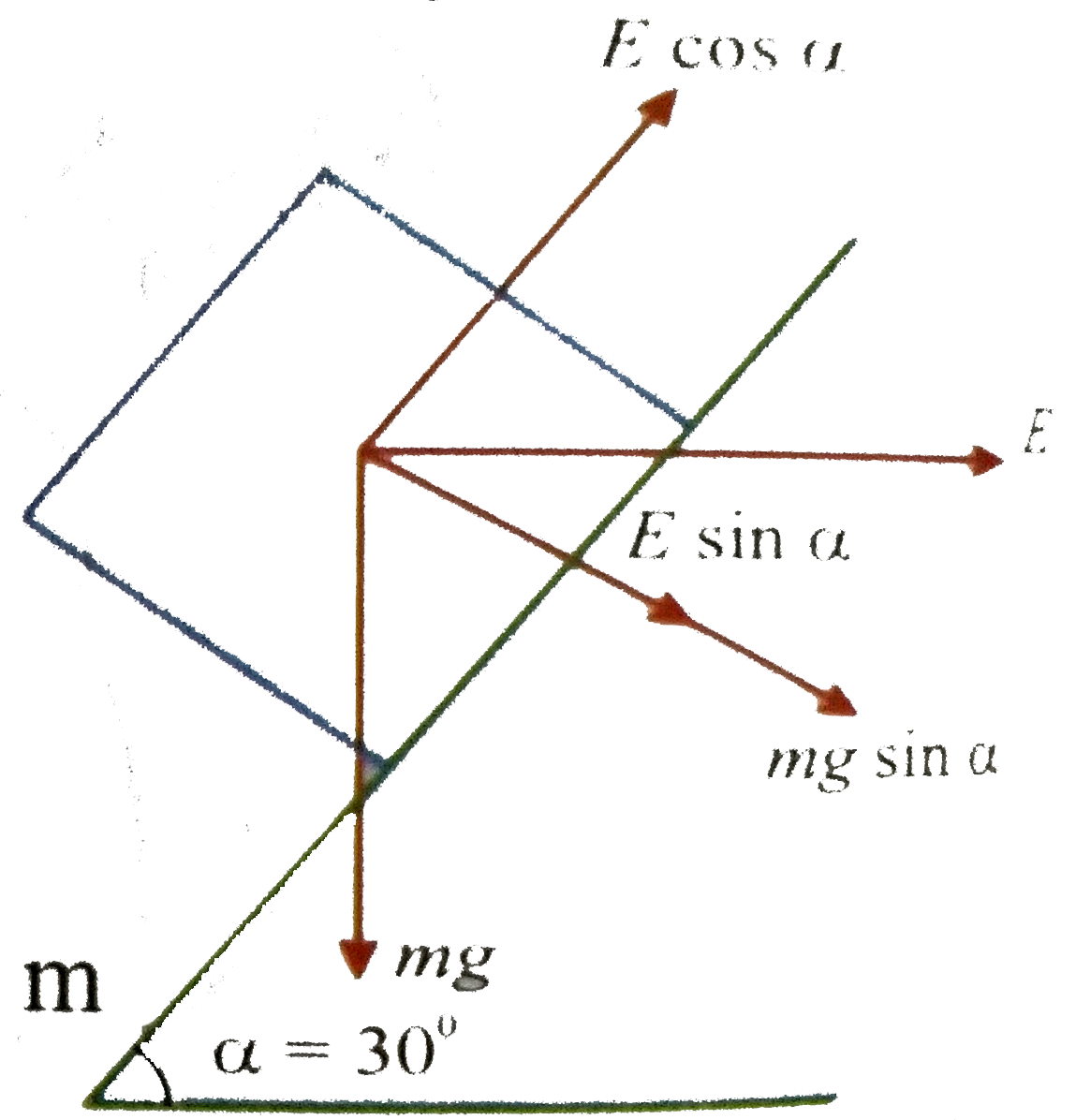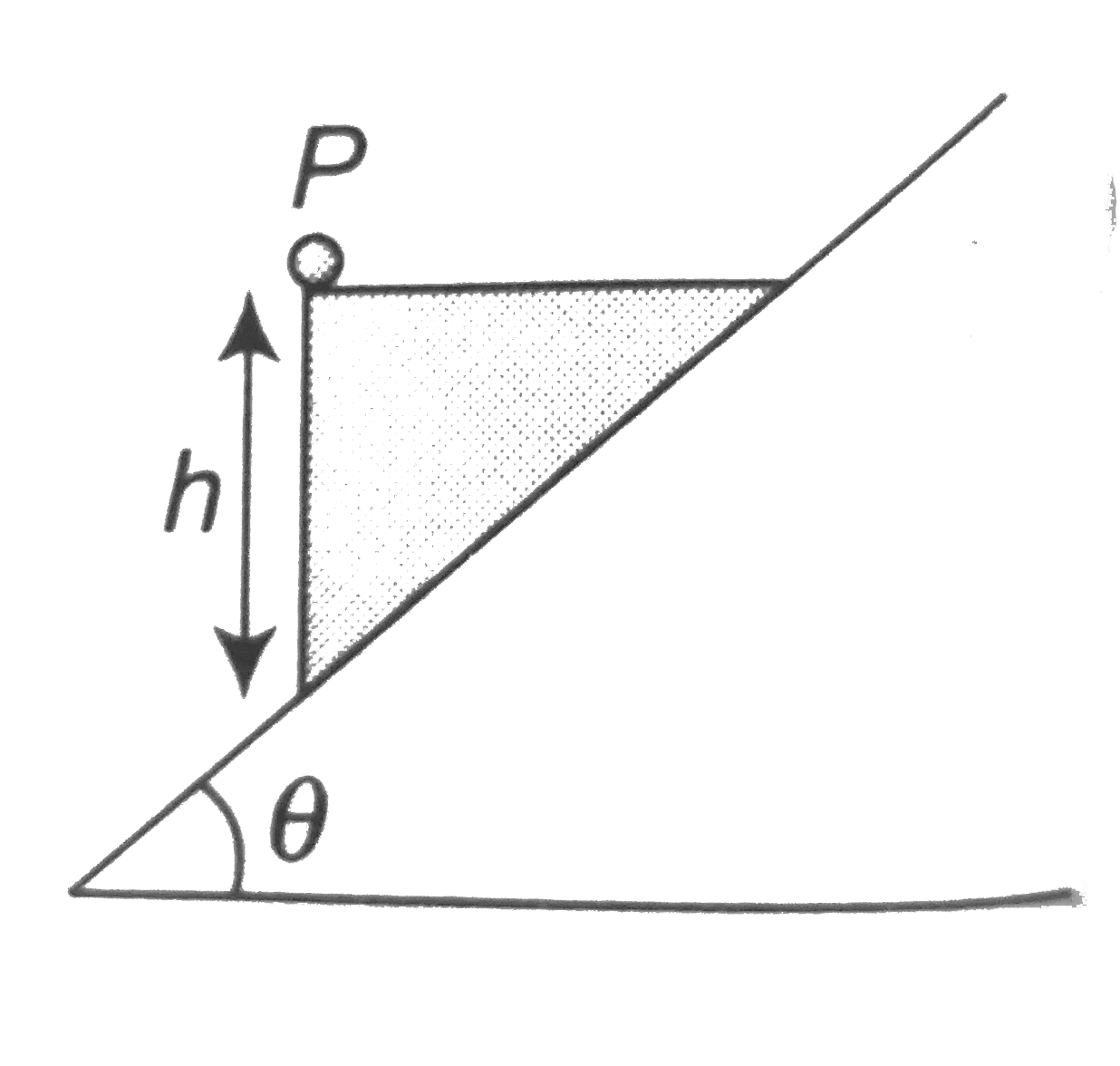An inclined plane making an angle of with the horizontal is placed in a uniform horizontal electric of 100 V as shown in the figure
 A particle of mass 1 kg and charge 0.01 C is allowed to slide down from rest from a height of 1 m. If the coefficient of frictio nis 0.2, find the time it will take the particle to reach the bottom.Solution in Punjabi
A particle of mass 1 kg and charge 0.01 C is allowed to slide down from rest from a height of 1 m. If the coefficient of frictio nis 0.2, find the time it will take the particle to reach the bottom.Solution in Punjabi
Step by step video & image solution for An inclined plane making an angle of 30^@ with the horizontal is placed in a uniform horizontal electric of 100 V m^-1 as shown in the figure A particle of mass 1 kg and charge 0.01 C is allowed to slide down from rest from a height of 1 m. If the coefficient of frictio nis 0.2, find the time it will take the particle to reach the bottom. by Physics experts to help you in doubts & scoring excellent marks in Class 12 exams.
Updated on:21/07/2023Topper's Solved these Questions
- ELECTRIC FIELDBOOK - MODERN PUBLICATIONCHAPTER - ELECTRIC FIELDEXERCISE - EXERCISE
95 Videos
- ELECTRIC CURRENT. RESISTANCE AND E.M.FBOOK - MODERN PUBLICATIONCHAPTER - ELECTRIC CURRENT. RESISTANCE AND E.M.FEXERCISE - EXERCISE
64 Videos
- ELECTRIC POTENTIALBOOK - MODERN PUBLICATIONCHAPTER - ELECTRIC POTENTIALEXERCISE - EXERCISE
38 Videos
Similar Questions
In defining electric field due to a point charge, the test charge has to be vanishingly small. How this condition can be justified, when we know that charge less than the on an electron or a proton is not possible?
View SolutionWhat is drift velocity of electrons? How do you explain the flow of current in a conductor based on this?
View SolutionFind an expression for line integral of electric intensity.
View Solution1 kg particle at a height of 4 m has a speed of 2 m/s down a incline making an angle 53^@ with horizontal as shown in figure. It slides on a horizontal section of length 3 m at ground level and then up an incline making an angle 37^@ with horizontal. All surfaces have mu_k=0.5 . How far from point O (bottom of right inclined plane), along the incline making and angle 37^@ with horizontal, does the particle first come to rest?
View SolutionA wedge of height 'h' is released from rest with a light particle P placed on it as shown. The wedge slides down an incline which makes an angle theta with the horizontal. All the surface are smooth, P will reach the surface of the incline in time:
View SolutionAn inclinded plane making an angle of 30^(@) with the horizontal electric field of 100 Vm^(-1) as shown in Figure. A particle of mass 1 kg and charge 0*01 C is allowed to slide down from rest from a height of 1m . If the coefficient of friction is 0*2, find time taken by the particle to reach the bottom.
View SolutionA particle sides down from rest on an inclined plane of angle θ with horizontal. The distances are as shown. The particle slides down to the position A, where it velocity is v.
 .
.
View SolutionAn inclined plane of length 5.60 m making an angle of 45∘ with the horizontal is placed in a uniform electric field E=100Vm−1. A particle of mass 1kg and charge 10−2C is allowed to slide down from rest position from maximum height of slope. If the coefficient of friction is 0.1, then the time taken by the particle to reach the bottom is
View SolutionA particles of mass 1kg and carrying positive charge 0.01C is sliding down an inclined plane of angle 30∘ with the horizontal .An electric field E is applied to stop the particles.If the coefficient of friction between the particles and the surface of the plane is 12√3. E must be

View SolutionA particle of mass 1kg and carrying 0.01C is at rest on an inclined plane of angle 30∘ with horizontal when an electric field of 490√3NC−1 applied parallel to horizontal .The coefficient of friction is
View SolutionAn inclined plane making an angle of 30^(@) with the horizontal is placed in a uniform horizontal electric field 200 (N)/(C ) as shown in the figure. A body of mass 1kg and charge 5 mC is allowed to slide down from rest at a height of 1m. If the coefficient of friction is 0.2, find the time taken by the body to reach the bottom. [g=9.8m//s^(2), sin 30^(@)=(1)/(2), cos30^(@)=(sqrt(3))/(2)]
View SolutionA particle of mass 1 Kg and carrying 0.01 C is at rest on an inclined plane of angle 30∘ with horizontal when an electric field of 490√3NC−1 applied parallel to horizontal, the coefficient of friction is
View SolutionAn inclined plane of length 5.60 m making an angle of 45∘ with the horizontal is placed in a uniform electric field E=100Vm−1. A particle of mass 1kg and charge 10−2C is allowed to slide down from rest position from maximum height of slope. If the coefficient of friction is 0.1, then the time taken by the particle to reach the bottom is1 s 1.41 s 2 s None of these
View SolutionHorizontally 30^@ The nettle is placed in a uniform horizontal electric field of 100 V / m. On this net, a particle of 1 kg height and 0.01 C charge is left to slip below the resting state. If the coefficient of friction is 0.2, then the time taken by the particle to reach the bottom of the surface (g= 9.8m//s^2)
View SolutionA wedge of height 'h' is released from rest with a light particle P placed on it as shown. The wedge slides down an incline which makes an angle theta with the horizontal. All the surface are smooth, P will reach the surface of the incline in time:

View Solution1 kg particle at a height of 4 m has a speed of 2 m/s down a incline making an angle 53∘ with horizontal as shown in figure. It slides on a horizontal section of length 3 m at ground level and then up an incline making an angle 37∘ with horizontal. All surfaces have μk=0.5. How far from point O (bottom of right inclined plane), along the incline making and angle 37∘ with horizontal, does the particle first come to rest?
View Solution
